Contemporary VS Traditional Roofing Materials
Many effective traditional roofing practices haven’t changed and are still used today. However, over time, several roofing practices and materials have developed and improved, giving you more options to take into consideration.
Traditional roofing materials such as concrete, clay, slate and lead are heavy and can restrict you to higher pitches and the shape of your roof. Modern/contemporary roofing methods, such as galvanised steel, aluminium, and composite tiles can offer more flexibility with lower pitches and a more creative roof shape.
Traditional Roofing Materials:
· Lead
Some traditional roofing materials are strong and can last a substantial amount of time. A lead roof can potentially maintain its integrity for 100 years, but lead is quite heavy and if not installed correctly it can cause damage and cracks to other areas of the roof.
Moreover, lead is a toxic metal, so any run-off water must be directed straight down to the drains. Also, due to its toxicity, roofers installing lead must wear substantial protective clothing and follow very strict safety rules. Lead roofs must be installed by a trained professional.
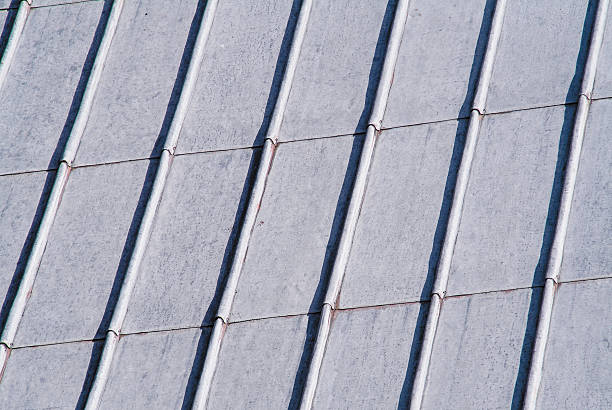
· Clay Tiles
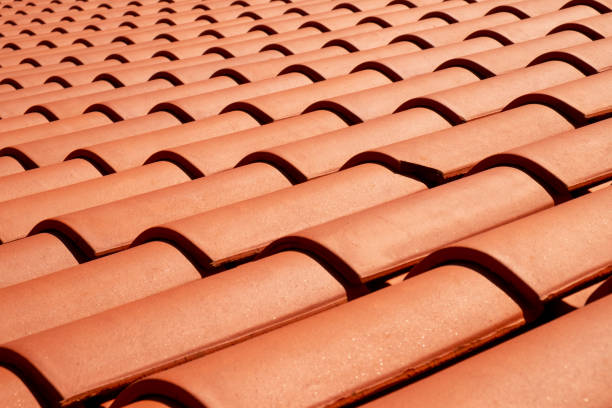
Clay tiles are another traditional roofing material which can last a substantial amount of time, but they are notoriously expensive. Clay tiles are fragile and can easily crack or break, meaning they are definitely not suitable for walking on. In cold temperatures they can also become brittle, making them extra vulnerable to breakages.
Whilst clay tiles are lighter than concrete tiles, they are still very heavy and should not be used on a weak building or a low-pitched roof. Alongside their fragility and weight, clay tiles are not 100% wind resistant. They have a higher wind resistance compared to some other roofing materials but can still move around in high winds, which could potentially be dangerous.
· Concrete Tiles
Concrete tiles are strong and easy to maintain without the need for protective treatments. Maintaining concrete tiles consists of cleaning or removing fallen debris and moss growth. Due to them being dense and strong, concrete tiles are fire resistant.
However, concrete tiles are one of the heaviest roofing material choices, meaning they can be difficult to install and transport. Concrete is strong but it is made of composite material, meaning that if the tiles are dropped/fall or stood on, they will break beyond repair. Concrete tiles will also lose their aesthetic pretty quickly due to the weather. They can suffer from stains, cracks, and moss growth faster than slate or clay tiles.
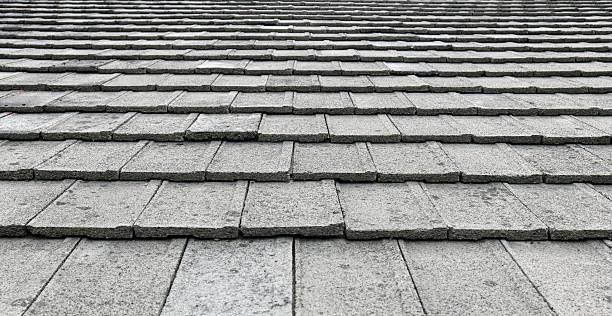
· Slate Tiles
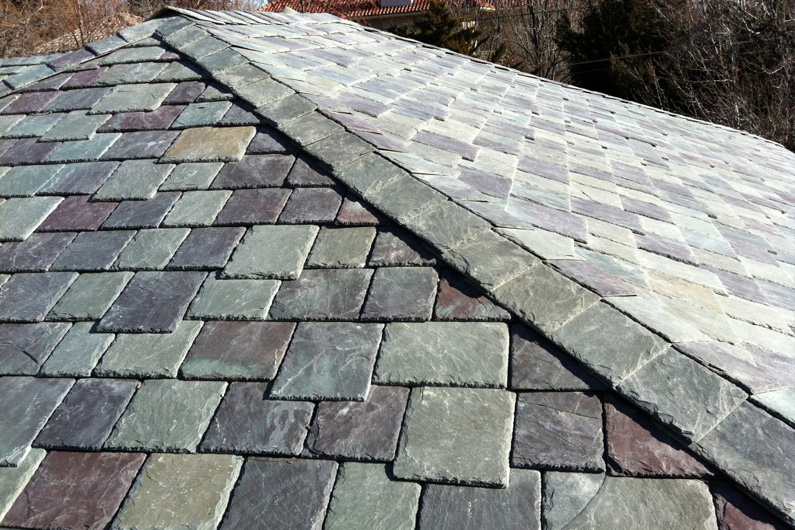
Slate is a very dense material making it energy efficient, keeping your home cooler in the summer and warmer in the winter. Being a natural stone, slate is also fire-resistant, environmentally friendly and has a long life span – but it is known to be one of the most expensive roofing materials you can buy.
Not only is slate expensive to buy, but it can also be expensive to install as specialist installers are required. Whilst slate is durable it cannot withstand being walked on and can easily break and suffer damage during transport and installation.
Contemporary Roofing Materials
· Metal Roof Tiles
Metal roofing beats traditional roofing materials for several reasons. It is durable and has a great lifespan, sealing out water and surviving high winds as it is secured down with nails/screws. It is resistant to fire, mildew and rot, all adding to the longevity of the roof. Metal roofing is also very lightweight meaning it is easier to install, and transport while being suited for low-pitched roofs. The properties of the roofing material allow your home to stay cool in the summer and warm in the winter.
It is widely believed that metal roofing materials can make rainfall noisier, however, many metal roofs are corrugated and designed using various profiles and coatings so that they will absorb external sound, including weather conditions. Installing these profiles with the appropriate insulation will dull those sounds, making them barely even noticeable – if at all – equal to traditional roofing materials!
Here at Britmet, we offer a wide range of metal profiles made from the highest-grade Alu-zinc steel, coated in a granulated finish, and sealed using an acrylic glaze. With various aesthetics, our products are suitable for low pitches, one of which can go down to 5°! Granulated Britmet tiles are available in a 0.45mm thickness but also come in a 0.9mm, offering an anti-vandal option.
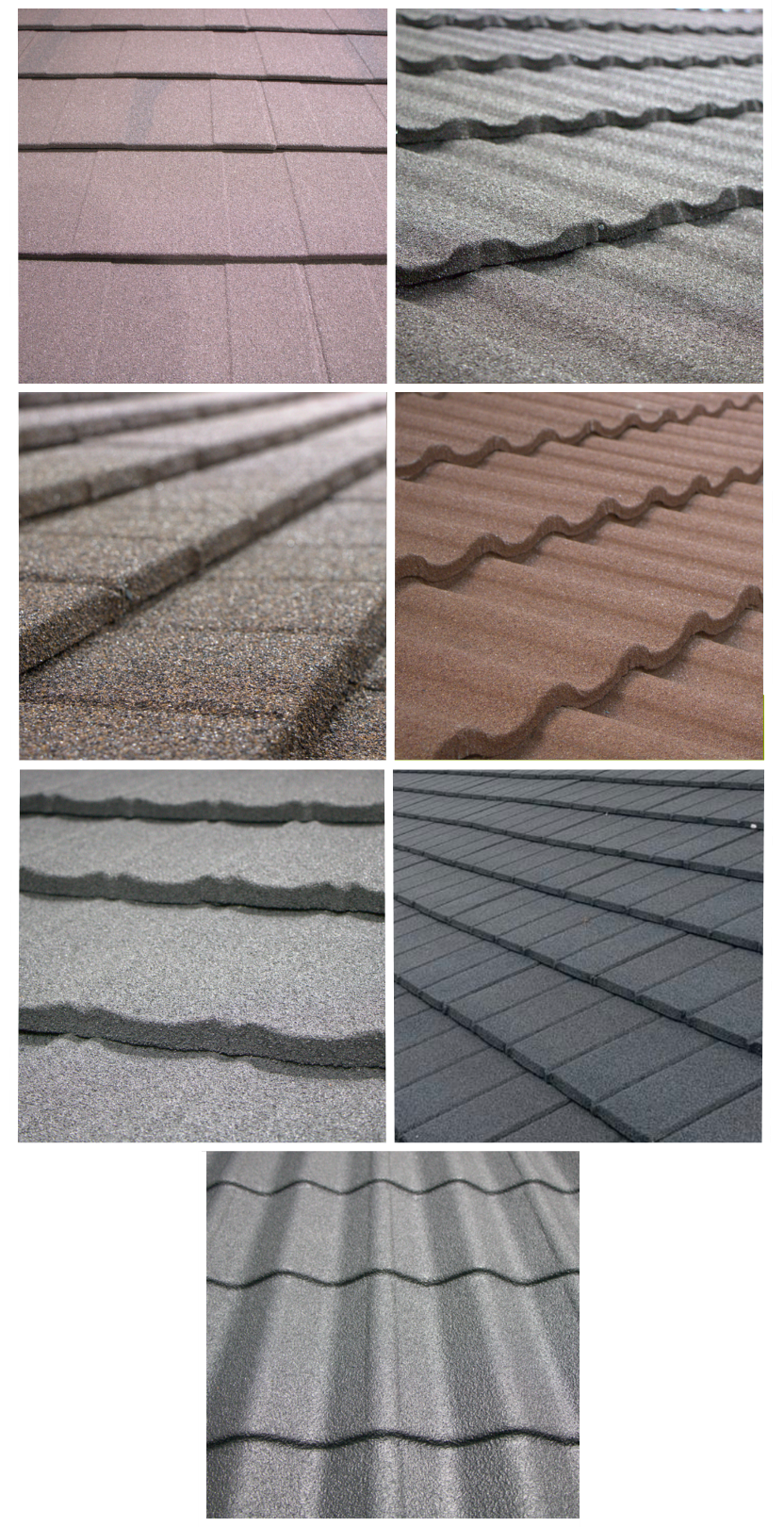
· Synthetic/Composite Roof Slate
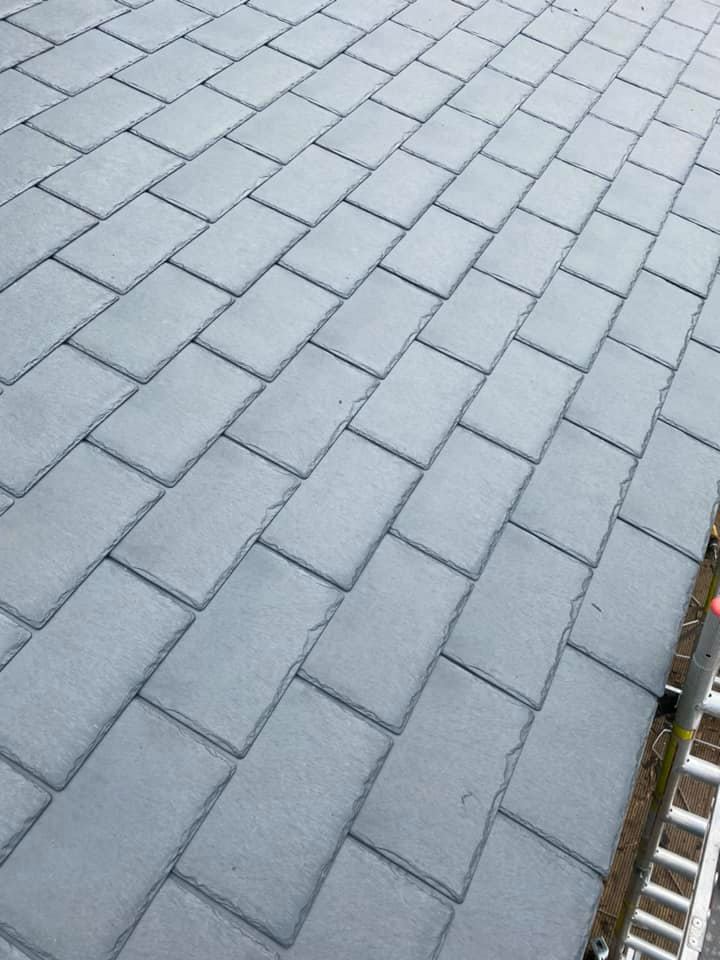
Composite slate is durable, lightweight, and more cost-effective than traditional slate in terms of product, durability and installation costs. Synthetic slates are also environmentally friendly, as they are often manufactured using recycled and recyclable materials. They are much quicker and easier to install when compared to traditional slate, reducing labour costs and installation time.
Britmet manufactures a lightweight, composite slate called LiteSlate. Our innovative synthetic slate is made using 90% recycled polymers while providing all of the characteristics you can expect from traditional slate. LiteSlate offers an authentic finish with riven edges, traditional colour choices and impeccable durability. LiteSlate won’t crack, break, chip or delaminate, and has a EN13501-5:2016 Broof t4 Fire Rating.
Furthermore, as LiteSlate is Injection moulded, it has detailed impressions displaying where to fix the slate, and a useful pitch finder, making it even easier for DIY installation. It is also easy to cut as you only require a sharp, fine-tooth saw or sharp blade, cutting costs even further for you!
There are lots of variables to consider when choosing what materials to use when doing your roof. Both traditional and contemporary roofing have pros and cons but ultimately it depends on your personal requirements and preference. Britmet is proud to offer traditional aesthetics while using contemporary designs and manufacturing processes, giving you the best of both worlds.
Sources:
- https://www.elcroofing.co.uk/modern-roofing-materials-vs-traditional-roofs/#:~:text=Durability,in%20less%20than%20a%20decade
- https://www.duraroof.in/blog/traditional-roofing-modern-roofing-know-their-differences/
- https://www.empireupvcandroofing.co.uk/news/lead-roofing-what-is-it-and-can-it-be-dangerous#:~:text=Lead's%20main%20drawback%20is%20that,should%20be%20left%20to%20experts
- https://roofing.quotatis.co.uk/clay-tiles-advantages-disadvantages/
- https://www.homelogic.co.uk/advantages-and-disadvantages-of-concrete-roof-tiles
- https://nswslateroofing.com.au/advantages-disadvantages-of-a-slate-roof/
- https://legacyusa.com/blog/synthetic-slate-roofing/
- https://pjsroofing.com/the-pros-cons-of-synthetic-slate-roofing/
SOCIALISE WITH US
RECENT POSTS
Introducing the Perfect Holiday Home Roof: parcpan by Britmet Lightweight Roofing
Britmet Lightweight Roofing Returns to the Great Caravan, Motorhome, and Holiday Home Show







